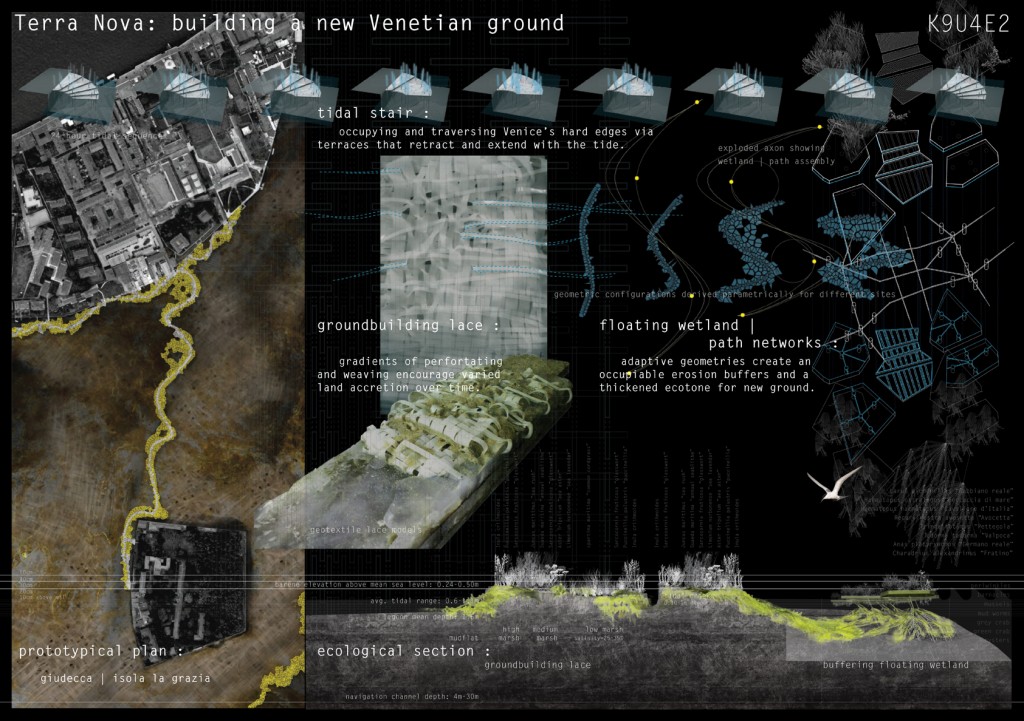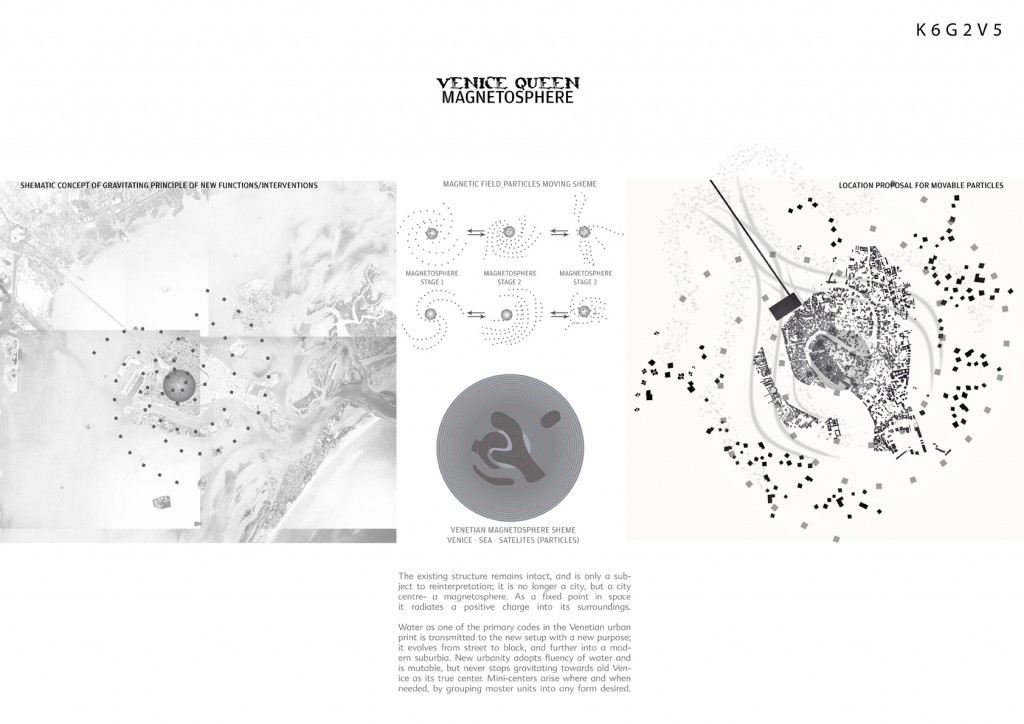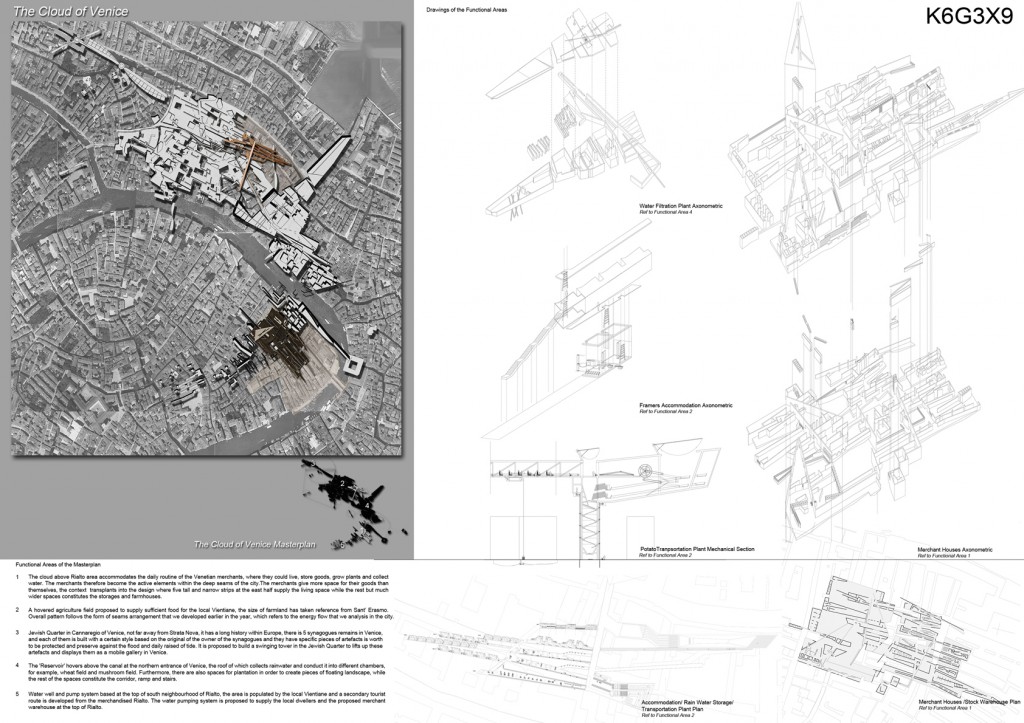Info:
Title: The Cloud of Venice - Code: K6G3X9Contest: Venice / 2011
By: L. L. Tam / W. Yan
Views: 3394 Likes: 3
Votes:
BJARKE INGELS6 NERI OXMAN9 ELENA MANFERDINI4 MARIA LUDOVICA TRAMONTIN4 BOSTJAN VUGA45.4
The Cloud of Venice
The proposal of city cloud is derived from a mapping project of Venice, we recreated the city into a set of languages of deep seams, this beautiful combination of narrow gaps constitutes our future research; another point that attracts us is the tidal change in Venice, how does water occupy the gaps and leaks out through time. We focus on the movement of the cloud cutting through the city while creating extraordinary gaping spaces. In doing so, we start to answer the question of how to make a cluster of cloud, and that includes not only our ambitions of a floating city, but also realistic concerns. Therefore the priority of the semester is to examine the architectural character of the cloud’s weight, thickness, permeability and accessibility in between both the existing city and the proposed city.
Throughout the experiment in the urban strategy, we develop the possibility of architecture from building physical models that follow the same language, from a model which pay particular attention on tidal level indicates by measured profile on cardboard along with plaster casting to remember the heritage aspect of the city, to relocate the figures back onto the urban, a second model retraces the city by hand-drawing that allow to pick up movement of the cloud and generates the potential of functional arrangement in the hovering city.
From the macro scale of urban strategy, we have zoomed into a more specific 2 pieces of architecture to extend the functional possibility of the imagination cloud.
One of us chooses the cloud above Rialto area, the architecture complex accommodates the daily routine of the Venetian merchants, where they could live, store goods, grow plants and collect water. The merchants therefore become the active elements within the deep seams of the city. Following the argument of Merchant’s Lock from last semester, that the merchants give out much more space for their goods than themselves, the context is been transplanted into the design where the five tall and narrow strips at the east half supply the living space while the rest but much wider spaces constitutes the storages and farmhouses.
The other one picks the area in Strada Nova, the extending arms of the buildings connect the farming fields and working spaces, in the attempt to embed the process of agriculture into the architectural experience. This hovered agriculture field proposes to supply sufficient food for the local Vientiane, the size of farmland has taken reference from Sant’ Erasmo. The architecture program includes accommodations for farmers, scholars and seasonal workers; storage space; transportation system of farm product communicates from the level of the hovered field to the level of Venice City. An equipped large containment to collect rainwater co-works with a natural water filtration plant to provide sustainable and sufficient clean water for irrigation and daily consumption by the dwellers.
Info:
Title: The Cloud of Venice
Time: 6 giugno 2011
Category: Venice
Views: 3394 Likes: 3
Tags: Agriculture , Architecture , Arts , L. L. Tam , Merchant , Piazza San Marco , Scripps Institution of Oceanography , Venice , Vientiane , W. Yan








